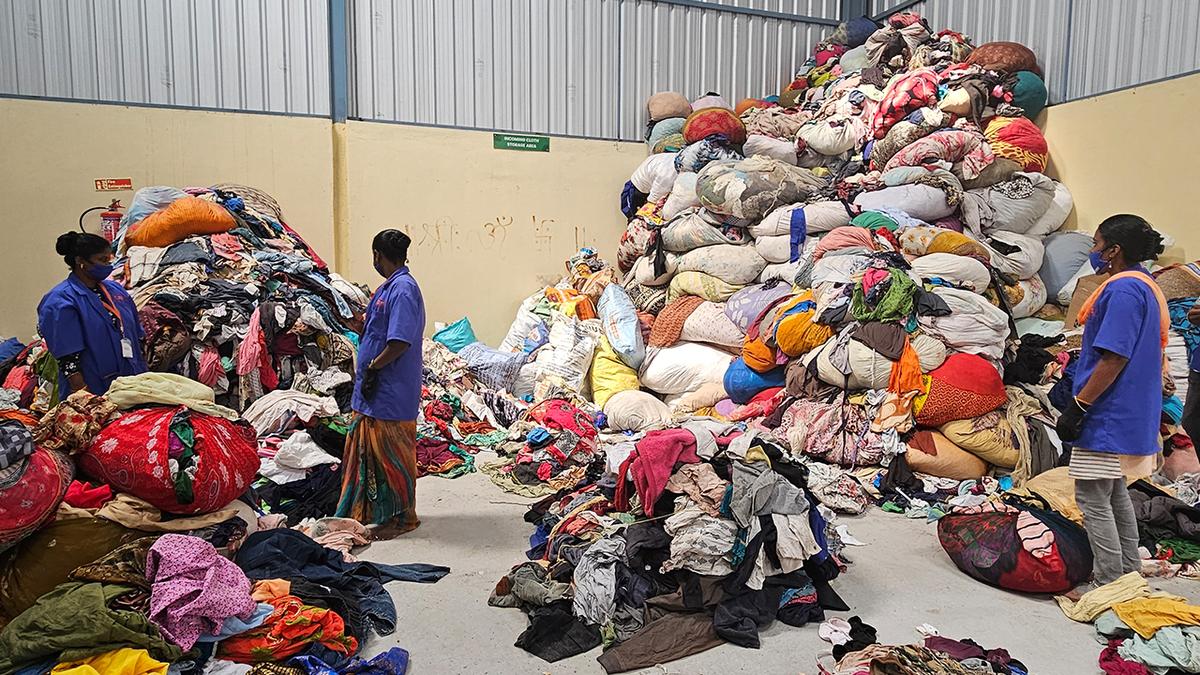
Introducing circularity in used-textile waste management, with inclusivity at its centre Premium
The Hindu
At her Textile Recovery Facility (TRF) in Hirandahalli where used textiles from around 10 wards of Bengaluru arrive, Indumathi, a waste picker-turned-entrepreneur seems quite exuberant and optimistic. She remembers how during Deepavali the metal roof facility “almost turned into a shopping mall.”
At her Textile Recovery Facility (TRF) in Hirandahalli where used textiles from around 10 wards of Bengaluru arrive, Indumathi, a waste picker-turned-entrepreneur seems quite exuberant and optimistic. She remembers how during Deepavali the metal roof facility “almost turned into a shopping mall.”
“I was stunned that there is so much demand even for second-hand clothes! During Dasara and Deepavali, locals as well as migrant labourers came here to buy these clothes. The business was fast-moving during the festive month.”
TRF, run by Indumathi and employing four people, is part of a larger attempt to create a value chain for post-consumer textile waste while weaving into it alternate livelihood possibilities for waste pickers.
NGOs Hasiru Dala and Circular Apparel Innovation Factory (CAIF), in partnership with Saamuhika Shakti – a not-for-profit organisation that brings together multiple organisations to empower the informal waste picker community – have been working to see if they could introduce systems and processes for the same.
Under the initiative, used clothes are collected from individual houses, sorted, segregated and, depending on their quality, recycled, upcycled, downcycled or resold. According to the NGOs, this successfully diverted 1,35,000 kgs of cloth from reaching landfills last year between March and December and resulted in an 18-25% increase in the income of the waste pickers directly engaged with the programme.
After a successful pilot last year with eight wards in the city, the programme has been scaled up to cover 10 wards this year. Five more DWCCs (Dry Waste Collection Centres) are getting operationalised and the aim is to save 800 metric tonnes of clothes from reaching landfills in the next three years.
In India, more than 80% of PET bottles are recycled, thanks to the value chain established around it. Collecting them makes it a valuable proposition for waste pickers too. The same has not been the case with used textiles. With no formal system in place to create value out of textile waste, most of it ended up in landfills making it among the top three items in landfills.











